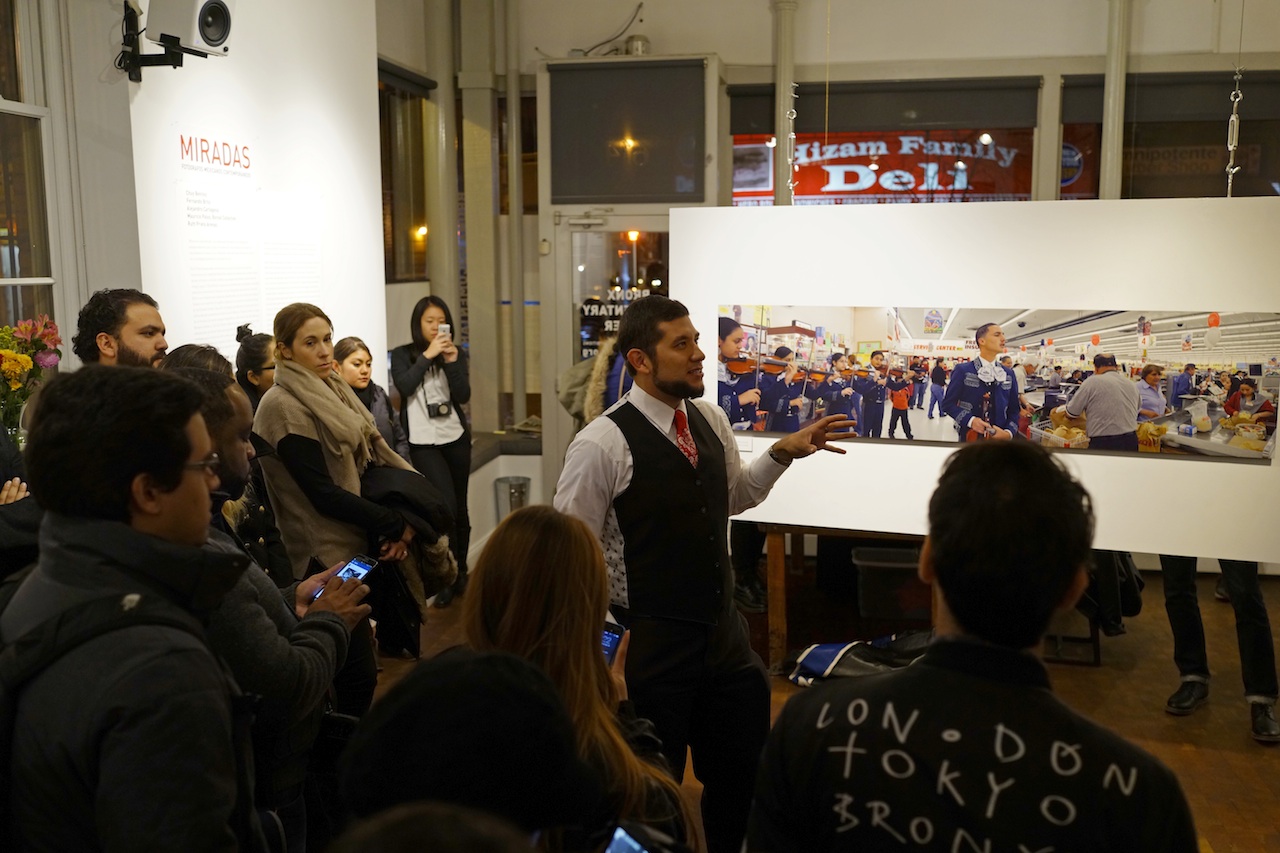
From mariachi to migrants, photos highlight country’s many faces
A new exhibition opened at the Bronx Documentary Center on Nov. 15, featuring photographs taken by Mexican photographers of joys and hardships south of the border.
Over a dozen photos by five Mexican photographers will hang on the walls of the gallery on Courtlandt Ave. as part of Miradas: Contemporary Mexican Photographers, through Jan. 12. Miradas, the Spanish word for “glances,” is the Center’s way of extending an open invitation to Mott Haven’s fast-growing Mexican population to come in and connect with the rest of the neighborhood.
Mexican photographer and local resident, Netza Moreno, 39, helped organize the exhibition. Moreno said Mexicans who live nearby and pass the center regularly, might hesitate to enter the Center when they see the bare walls from outside. But seeing photos of scenes from their homeland may help them feel more at ease, he said.
The photos highlight the political, environmental and safety issues faced by many Mexicans who have emigrated to escape their country’s rugged realities, Moreno added.
The exhibition aims to cast a more realistic and wide-ranging light on life in Mexico than is commonly portrayed in the US media, said The Bronx Documentary Center’s gallery manager, Bianca Farrow. The photos of migrants and drug cartels seen on this side of the border often skew Americans’ perceptions of the country, she said.

“I’m tired of seeing pictures taken by people who don’t know my community,” Moreno agreed. A photo of three children dressed up for Halloween as a princess, Spiderman and a cow, as well as photos of families buying groceries at a supermarket in Houston while a mariachi band plays, show the contrasts that mark Mexican daily life.
But other photos portray the more harrowing side of life for the nation’s people, such as one of a half-naked man lying dead on a patch of dirt beneath lush vegetation. Another spotlights a half-finished housing complex in the suburbs of Monterrey, underscoring the scourge of corruption at all levels of government.
One of the photographers, Alejandro Cartagena, 37, whose works explore urban and environmental issues, said the exhibit presents “an emotional conflict, because you want to be there but at the same time you don’t.”
“Mexico has a lot more to offer,” said Ruben Castillo, a Mexican restaurant supervisor who traveled from New Jersey for the show, adding it made him proud to see his fellow Mexicans showing off the many facets of their unique culture.
Miradas will run until January 12, 2015.

